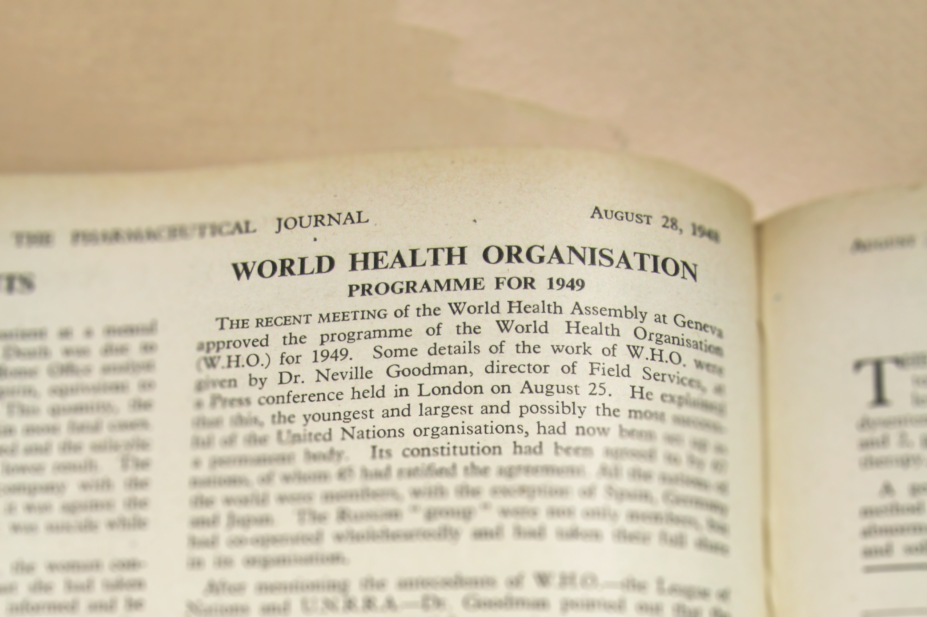
Corrinne Burns / The Pharmaceutical Journal
The World Health Organization (WHO) celebrates its 70th anniversary on 7 April 2018. Developments surrounding the new global health body were a regular feature of The Pharmaceutical Journal’s news pages in the late 1940s.
In September 1947, The Pharmaceutical Journal alerted readers to recent meetings between representatives of 15 countries in advance of the first health WHO Assembly[1]
, which was scheduled to take place in May 1948. By the following summer, it was reported that subjects under ongoing discussion by WHO were “malaria control, international epidemiology and medical literature”. It had been decided that an advisory committee should be established with experts on “therapeutic, prophylactic and diagnostic agents”, and a sub-committee should concentrate on “antibiotics, antigens, blood groups, vitamins and hormones”. A “biological standardisation section” was to be set up, its first objectives being antibiotics’ standardisation and the “establishment of dry standards for diphtheria and tetanus toxoids”.
Preparatory work on an International Pharmacopoeia was also underway, The Pharmaceutical Journal reported, with agreement, among other things, to “include all necessary tests for detection of impurities in products” and “to refer to a pure product by its formula and not by its name”.
By August 1948[2]
, The Pharmaceutical Journal
was able to inform readers about the WHO’s functions and its programme for 1949. It was noted that the WHO, as a United Nations organisation, “had now been set up as a permanent body” and that 67 nations had agreed its constitution. Its three main functions were “the control of epidemics, the international standardisation of biological products and field services”. The cost in 1949 was expected to be about $5m. The “big four” diseases were noted as being ”malaria, tuberculosis, venereal diseases and infant mortality” — and malaria was the WHO’s first priority.
The following month[3]
, there were reports that plans for international cooperation were already underway “on the medical side”, including teaching and research in addition to treatment. The possibility of internationally unified curricula for medical studies was mentioned, “with a view to establishing a universal medical qualification”, to be “registerable in all countries”. The Pharmaceutical Journal reported that it did not know of any such consideration with regards to pharmacy, and posed the question of whether “unification of pharmaceutical training with a universally registerable qualification” might be anticipated.
References
[1] News In Brief, World Health Organization. The Pharmaceutical Journal 1947;159(4377):212
[2] World Health Organization Programme for 1949. The Pharmaceutical Journal 1948;161(4426):136
[3] An Onlooker’s Notebook, World Health. The Pharmaceutical Journal 1948;161(4427):164
You may also be interested in
Long service of members

Membership fees 2022
